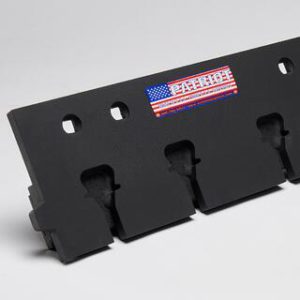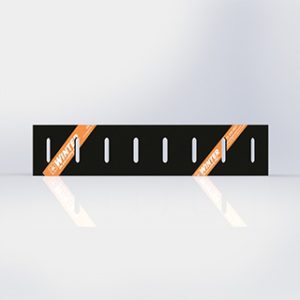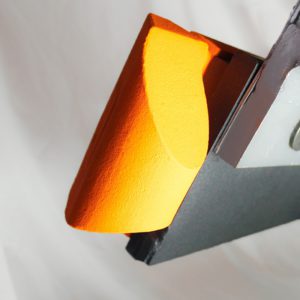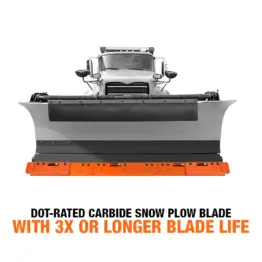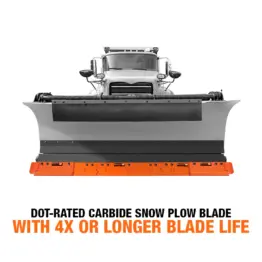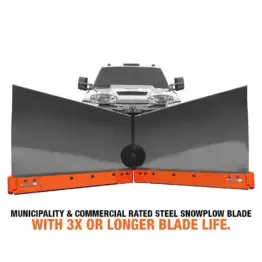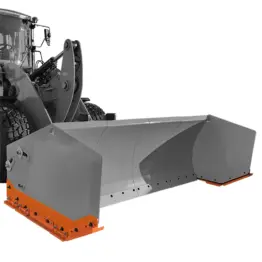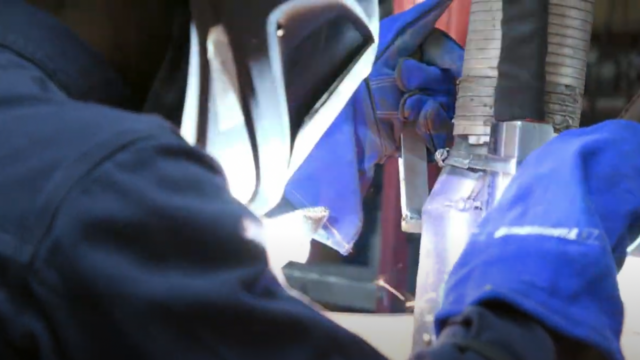Your Recent Search:
Snow Plow Blade Types Explained
December 19, 2017
Snow plow operators must choose from several types of snow plow blade, each suited to different tasks and surfaces. The primary types of material include steel, rubber, and carbide, which have their own unique benefits and drawbacks. You’ll also need to select a type of plow blade that’s right for your style of snow plow.
Each blade type offers unique strengths and challenges. Choosing the right blade is crucial for effective snow removal, depending on factors like surface type and snow conditions. The wrong type of blade could prove ineffective or even damage the surfaces that you’re clearing.
Whether you need to remove snow and ice from your driveway or clear miles of highway lanes, the snow plow blade you choose is pivotal to effective snow removal. Here’s a closer look at the main types of snow plow blades and their specific uses.
Snow Plow Blade Materials
The primary difference between various types of snow plow blades is the material of the cutting edge. Here’s a look at the three most common blade materials:
Steel
Pros:
- Cuts through hard packed snow
- Cuts through ice
- Lower cost
- Lighter weight
Cons:
- Wears quickly
- Can cause surface damage
- Less effective at high speeds
If you’re up against hard snowpack or ice, steel is a cost-friendly option. Its accessibility and low upfront cost make it the first choice of many municipalities. About 60% to 75% of the snow plows currently in circulation use steel blades.
Steel is especially helpful when it comes to cutting through packed snow and ice to clear the road surface, reducing the demand for salt or chemicals. Due to its aggressiveness, a steel blade installed without guards or shoes results in premature wear and numerous blade changes throughout the season.
The downside is that using a steel blade alone can cause major damage to the road surface. Choosing a low-budget steel blade for winter snow removal can lead to costly road repairs in the spring.
Rubber
Pros:
- Acts as a squeegee for slush
- Conforms to the surface
- Reduces salt use
- Won’t damage surfaces
- Can be flipped for longer life
Cons:
- Wears quickly
- Can’t cut through hard packed snow
- Can’t cut through ice
- Not for high speed plowing
Rubber snow plow blades have many advantages. Their flexibility makes them the perfect candidate for a blade that safely removes snow from decorative pavement. Rubber blades are most effective in slushy or light, fluffy snow and can come pre-punched or slotted so you can custom-fit them for your unique application. They require a stabilization bar. You may also need longer cutting-edge bolts to accommodate these blades’ added thickness.
Within the selection of rubber blades available, there exists a hierarchy. It’s important to ensure that your blades have a durometer level of at least 60 and a pressure level of at least 2000 PSI. Car tires typically have a durometer of 70. If your rubber blades don’t meet those requirements, premature wear, tearing, and roll-under are likely.
Carbide
Pros:
- Longest-lasting wear life
- Ideal for high speed plowing
- Reduce downtime
Cons:
- High upfront cost
- Doesn’t conform to surfaces well
- Less aggressive cutting power
Carbide blades are more expensive, but they are far superior to steel cutting edges. Product testing has shown that even one carbide blade has the strength of about 20 to 30 steel blades. Carbide is a hard material, meaning it will most likely break before it wears down. This is why most carbide blade users protect their investment with a steel cover blade and plow guards.
Carbide blades maintain a sharp cutting edge, making them highly effective for ice removal. Because carbide is often used for machining through hard materials like stainless or carbon steel, it’s perfect for tough jobs that would normally wear away other inferior materials. Ice is no match for these high-performing blades. Though many would consider carbide to be far too costly for small municipalities, these cutting edges will pay for themselves over time.
Types of Blades for Different Styles of Snow Plows
Blade material represents an important part of the equation. However, you should also consider the style of the plow. There are three main configurations when it comes to snow plow styles, which include the following:
Straight Plows
A straight plow is simple and popular, and it is economical and easy to operate. Straight blade plows are good for people new to plowing, as the systems only maneuver in four directions: up, down, left, and right.
Straight plows might be a good option if you only experience a few snow events each season. These systems can usually handle snowfall ranging from 1 to 6 inches. They are good for smaller properties, open lots, and driveways.
V-Plows
V-plows are universal and robust. You can clear dense properties and transition through the system’s various modes to tackle different types of projects. The V-mode breaks through packed-in, deep snow. Switch to a scoop to increase your hauling capacity and transition to the straight mode to back drag in wide-open spaces.
V-plows represent one of the most rugged options for clearing out snow. Plows like the Vulcan V-Plow Cutting Edge System last three times as long as OEM cutting edges, meaning you’ll get significantly more bang for your buck.
Box Plows
There are many different variations of the box plow. However, the basic layout is the same. The box plow features a blade that’s equipped with side panels, which are affixed at perpendicular angles. Simply put, the system resembles a box.
Box pows can push a large volume of snow. They offer a high degree of control but also require complex hydraulic systems, which means increased cost and maintenance.
They are incredibly efficient for large areas. However, keep in mind that there is a learning curve, and familiarizing yourself with this plow system will take some time.
How to Choose the Right Type of Snow Plow Blade
Now that you know about all of the different types of snow plow blades, it’s time to choose the right option for your equipment. Step one involves ensuring the blade is compatible with your system. Fortunately, that’s easier than you might expect.
Use Winter Equipment’s search plow by model feature and quickly find blade options that will fit your system.
Next, consider what material and style is best suited for your intended application. Rubber can accommodate less durable surfaces, whereas carbide offers maximum longevity. Steel blades represent a durable, do-it-all option. Choose a blade configuration that aligns with your conditions, and you’ll be ready to place your order.
Source Your System From Winter Equipment
Not sure which types of snow plow blades are the right fit for your machine? Don’t worry — we’ve got you covered. Contact an expert at Winter Equipment, and let one of our experienced team members help you find the ideal system for your plowing needs.
Subscribe to our blog
Get notified when we post a new article
"*" indicates required fields
